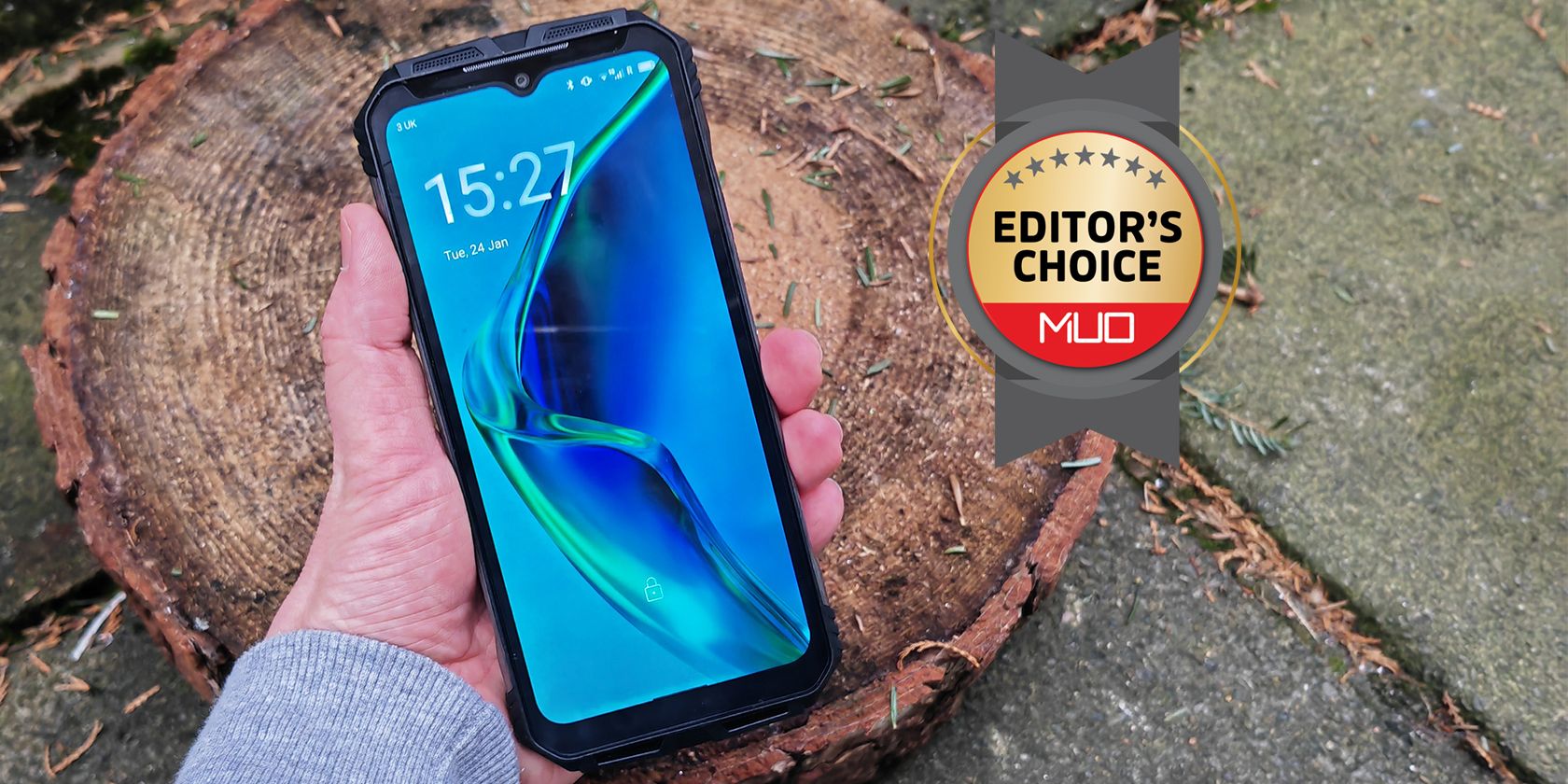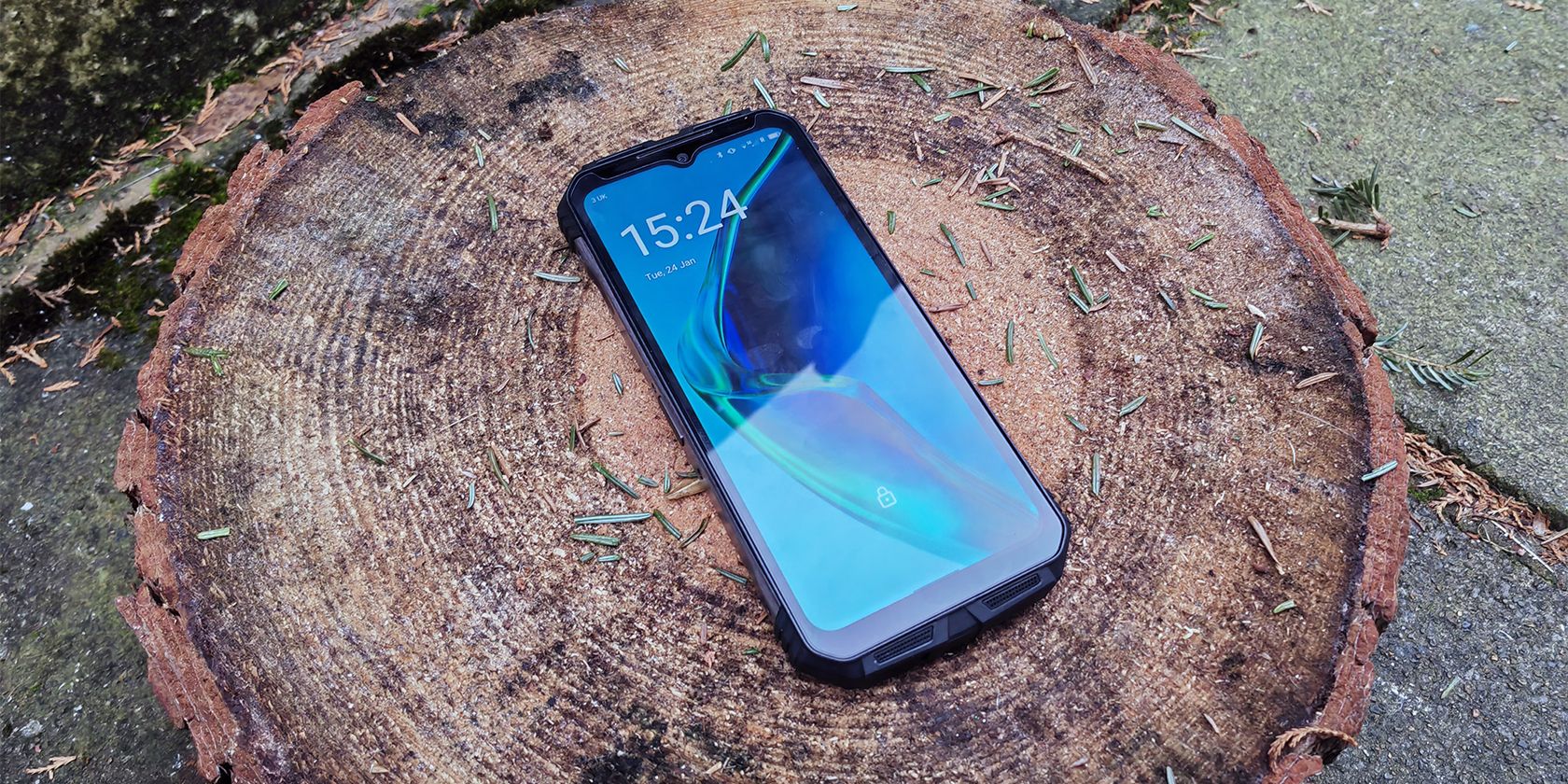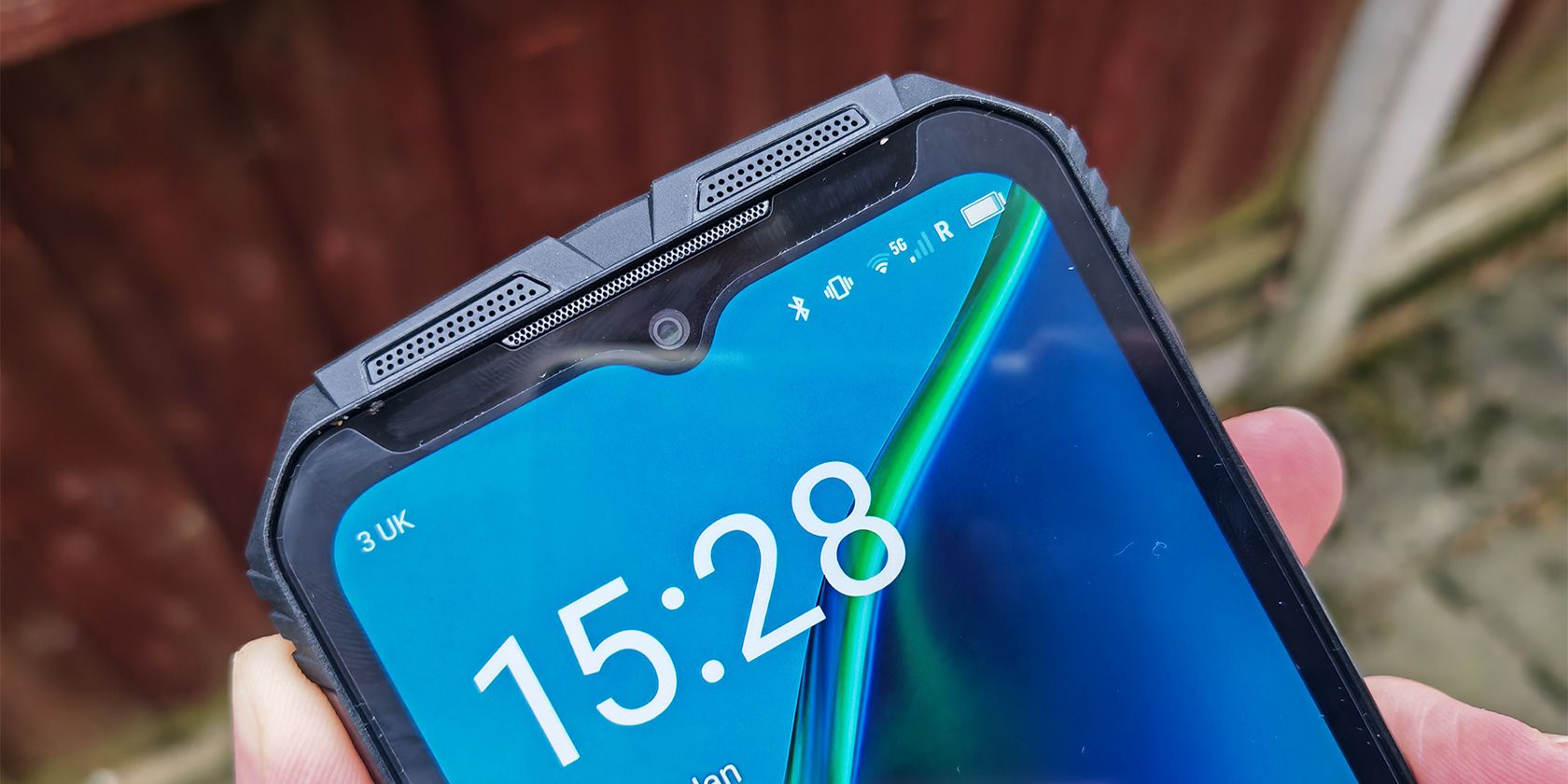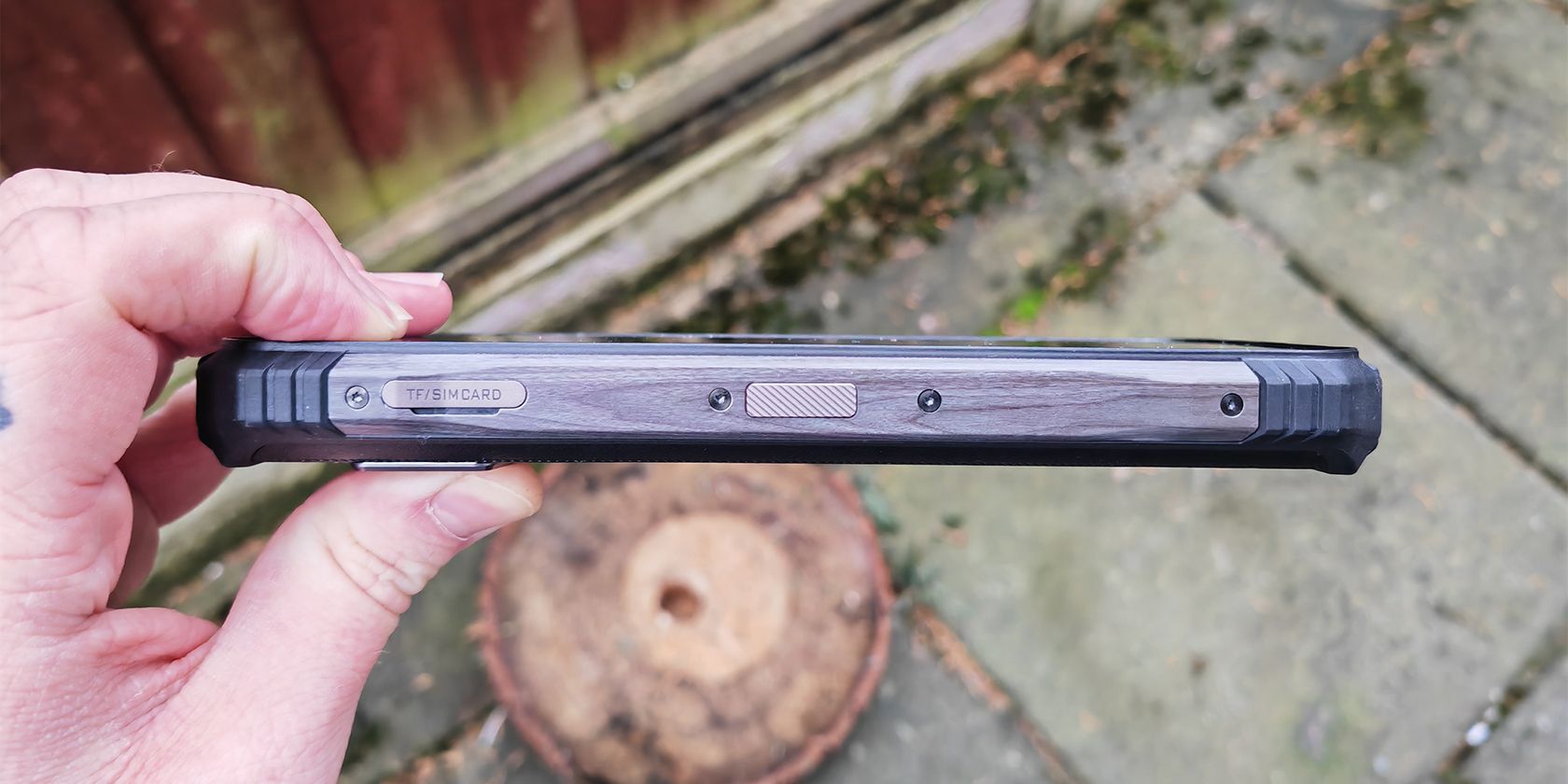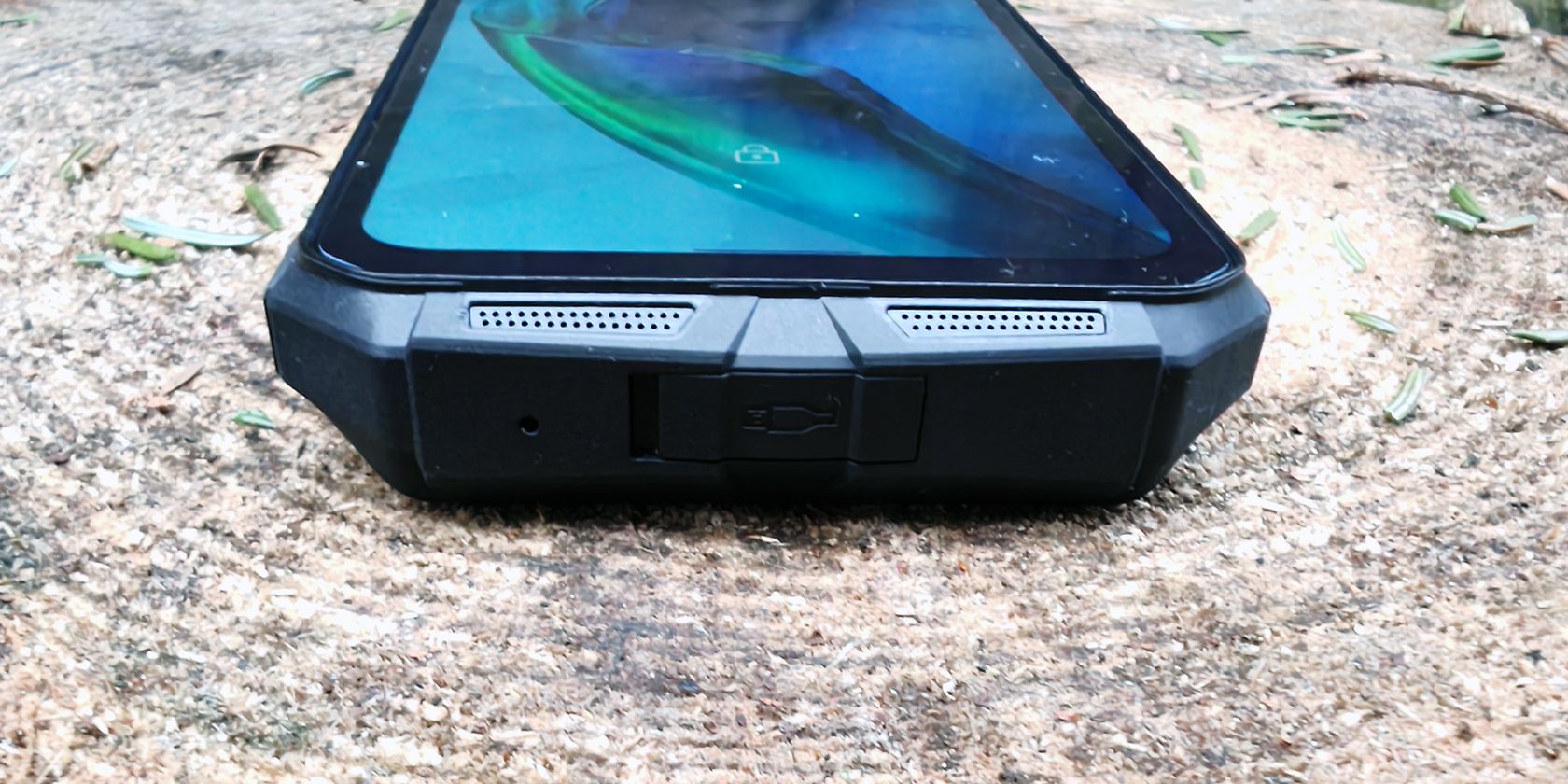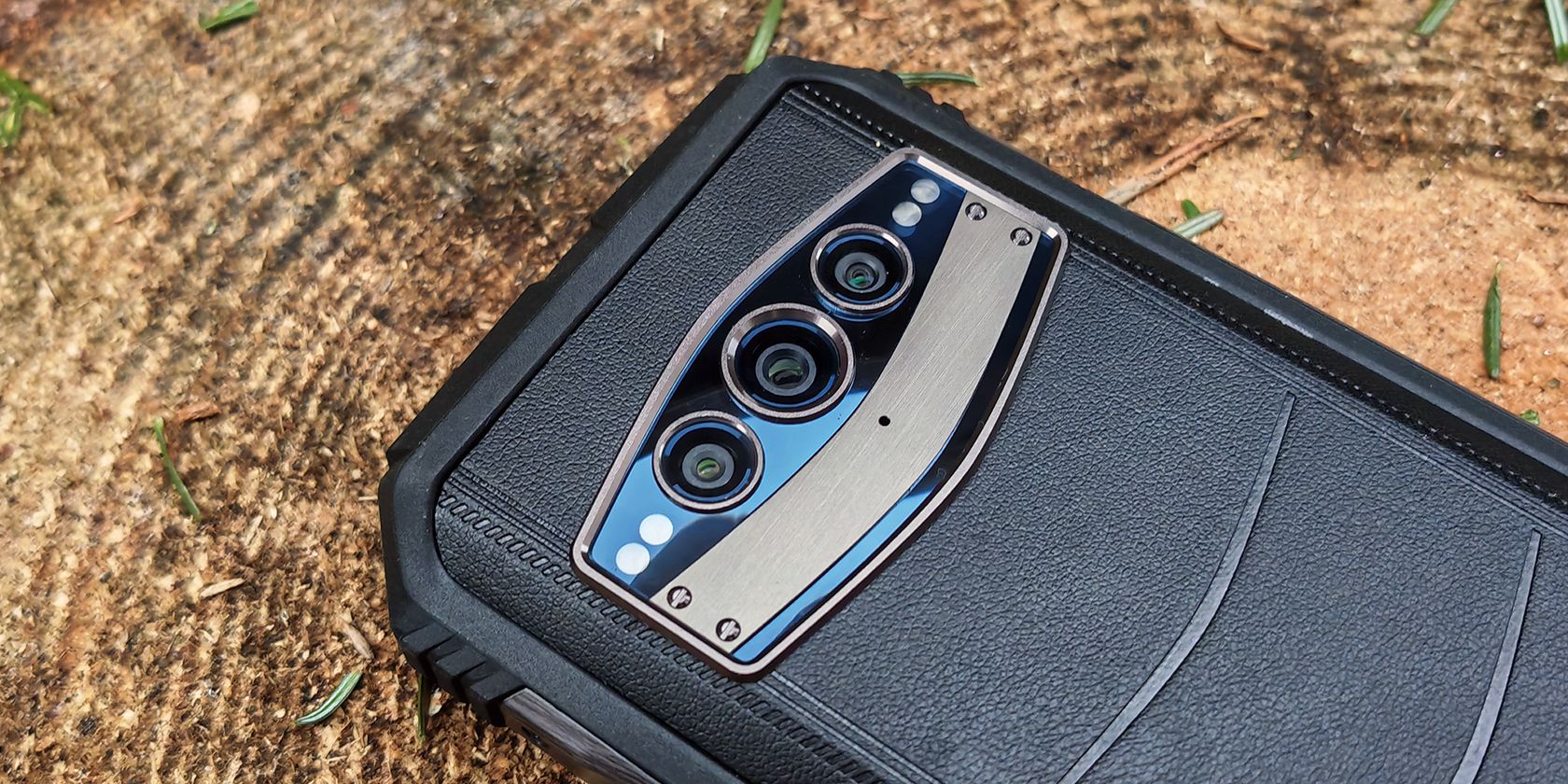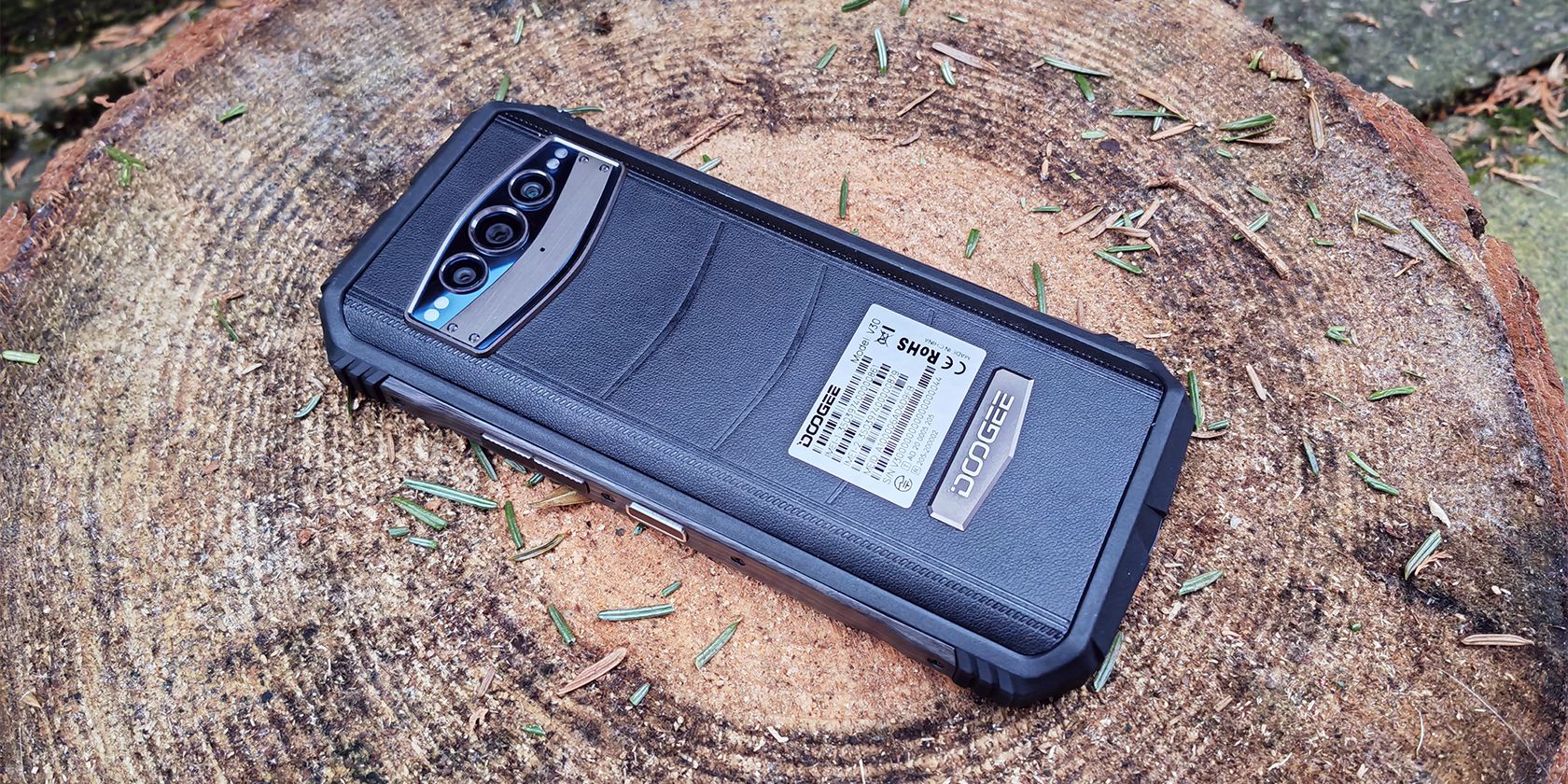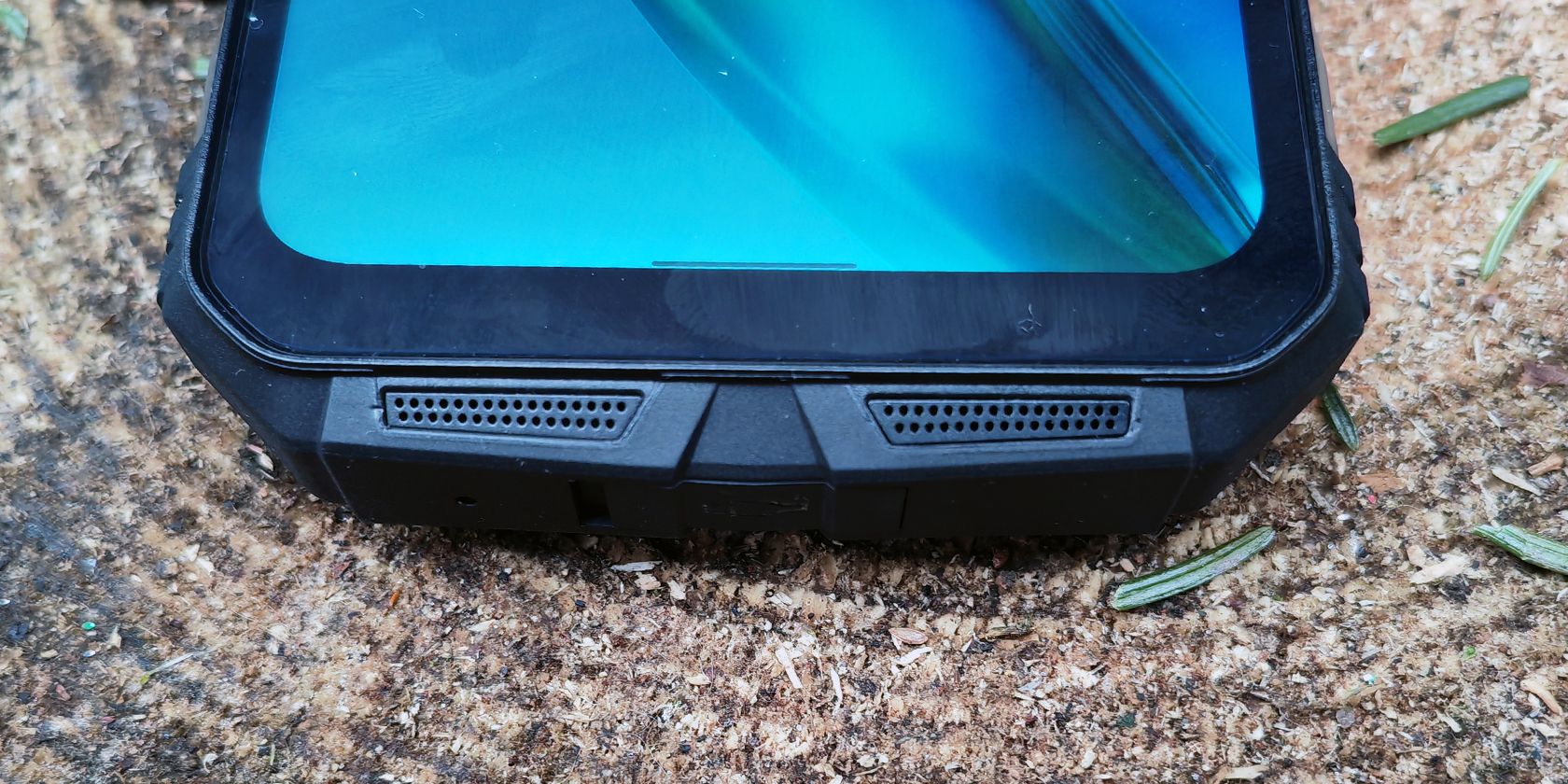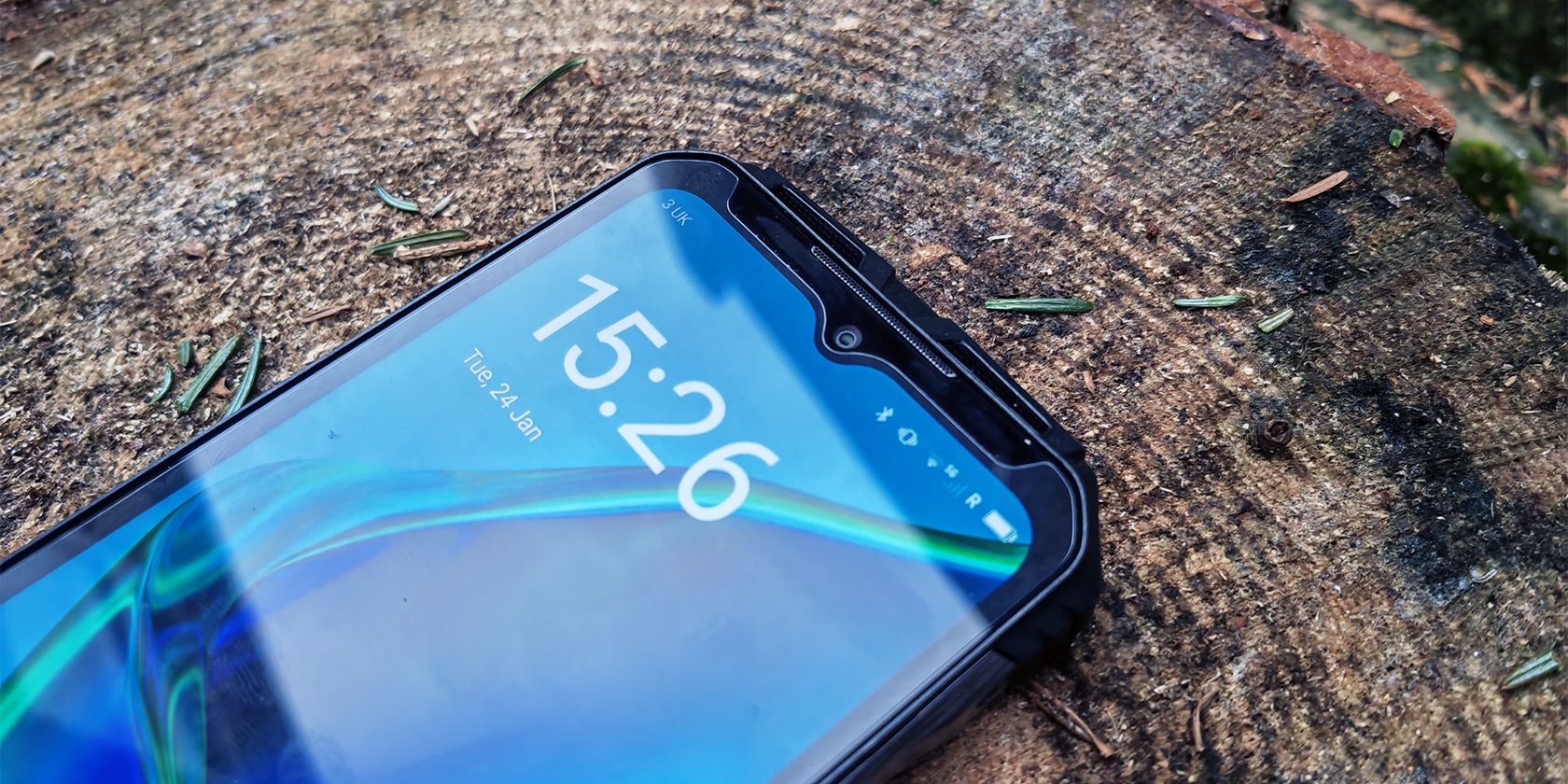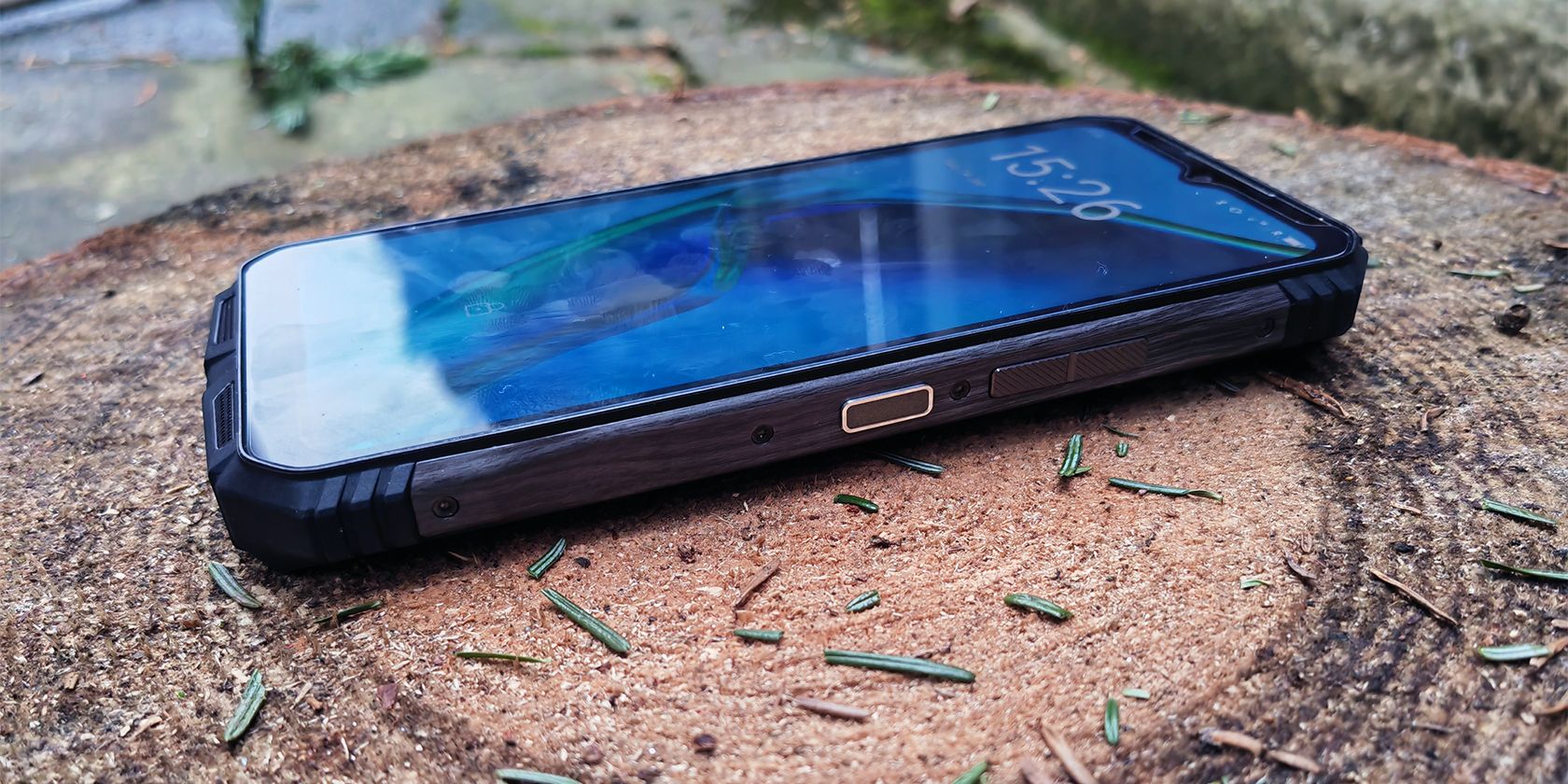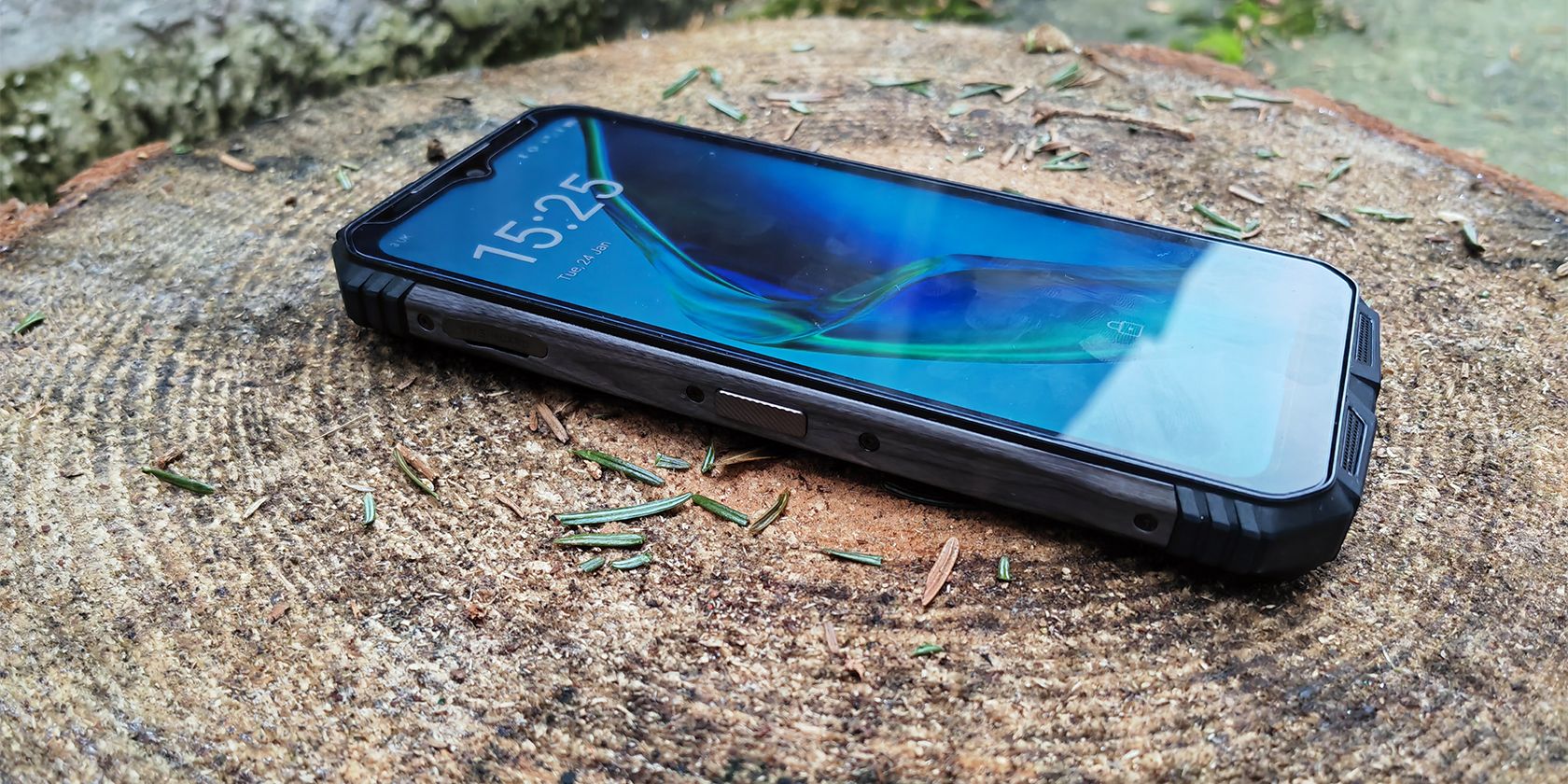Doogee V30 Rugged Smartphone
Are you after a new rugged handset? Well, call off the search party, because the Doogee V30 just threw itself at a pile of jagged stones, bathed in mud, then washed itself off under the faucet ready to jump into your hand. With a selection of brilliant features, not least eSim compatability and 5G connectivity (excellent for a rugged smartphone), this is definitely a candidate for your cash.
- Brand: Doogee
- SoC: MediaTek Dimensity 900
- Display: 6.58" FHD+ 120 Hz IPS waterdrop display
- RAM: 8 GB (15 GB with Memory Fusion, using idle ROM)
- Storage: 256GB (expandable to 1TB)
- Battery: 10800mAh
- Ports: Type-C, TF/Sim Card tray
- Operating System: Android 12
- Front camera: 32MP
- Rear camera: 108MP main, 20MP night vision, 16MP ultrawide
- Dimensions: 177 x 80 x 18 mm
- Colors: Black/Orange, Black
- Weight: 376g
- Charge speed: 66W Fast Charge
- IP Rating: IP69K
- Micro SD card support: Yes
- Definitely rugged!
- eSim and 5G connectivity
- 120Hz screen is lovely
- Customizeable button is handy
- 66 W fast charge
- Massive 10800 mAh battery
- Awkward fingerprint reader placement
- Uneccessary front-facing speaker grills collect dirt
By now, Doogee is well known to all of us for producing incredibly rugged smartphones. But, until now, pretty much all rugged smartphones have been quite far behind in terms of features. "Until now", because Doogee has just dropped its latest handset, the V30, and it is quite the game changer.
With features yet to be seen on most rugged smartphones, the V30 pushes the envelope in terms of what it brings to the table. If you're looking for a rugged handset that is really a pack leader, then set $449 aside for the V30; here's why.
Unboxing the Doogee V30
If you've seen our Doogee reviews before, you'll likely know what you get in the box. This time is no different (aside from the box, which is yellow and cuboidal, rather than black, square, and flat like the last few Doogee phones I have looked at). You'll receive:
- Doogee V30 handset
- Sim tray removal tool
- Charger and Type-C cable
- Screen protector tools
- Device literature
And that is everything! What more do you want?
A Fairly Familiar Form Factor
Given that this is a rugged smartphone, you can expect it to be pretty chunky. And it is. Weighing 376 grams (13.25 ounces), with a thickness of 18.3 mm (0.72 inches) at its widest point and a footprint of 177 x 80 mm (6.96 x 3.14 inches), this is by no means a small, lightweight handset.
The handset comes in two different colorways. We tested the matte black version, although you can also get an orange option, which I would've preferred to accessorize with my facial hair, but never mind, we can't have everything.
Doogee covers the left and right edges of the device in a wood-grain effect material, while the rear face of the handset has PU leather backing. Both design features are supposed to mimic the interior of a classic car, and Doogee has pulled this off, with the result being something that looks a little more elegant than your average rugged handset.
Looking around the device, we find the now-familiar set of features. The bottom edge of the handset features the Type-C charging port, and the pinhole microphone. The left edge of the device carries the sim tray and a customizable button that you can assign to several commands.
The right-hand side features the volume rocker and the power button, the latter of which doubles up as the fingerprint scanner for biometric security. More on that feature later.
The front of the handset is where most of the magic happens, given it's where the screen lives, alongside the waterdrop selfie camera at the top of the screen, with the LED indicator next to it on the left. You'll also notice four front-facing speakers; two at the top and two at the bottom of the screen. Flip it over, and you've got the camera array, with a range of sensors that sound super impressive on paper.
Doogee V30 Smartphone: Specifications
So, on to those "on paper" specs. They're pretty good! The phone ships with Android 12, so it is bang up to date and should receive updates for the next few years.
The global version of the V30 ships with a MediaTek Dimensity 900 SoC. This means that the V30 is equipped with an integrated 5G modem, which is excellent news for those needing rapid cellular data connectivity while out in the field. This isn't the first 5G handset from Doogee (the V10 was), but it is great to see 5G connectivity remains with the V30.
In terms of memory, you're looking at 8GB RAM (although the device can boost that to 15GB RAM using memory fusion technology, using idle ROM) and 256GB of on-board memory, which you can expand to up to 1TB by using the TF/Sim tray.
The screen is a 6.58" FHD+ 120 Hz IPS waterdrop display with a 2408 x 1080 resolution. It is good old Gorilla Glass as well, so you should be able to throw it as hard as you like at any nearby pile of jagged rubble without it splintering into thousands of tiny, thumb-lacerating shards. It has a pre-installed screen protector, too, furthering its rugged qualities.
One fantastic element here is the inclusion of an eSim alongside your standard sim tray. An eSim is a programmable, embedded sim card which is physically attached to the circuit board inside the V30. So, if your carrier supports it, you can just download your eSim profile and off you go; no need to stick anything in the sim tray to get yourself connected. You can see I am connected to the network via eSim in the photo above; at no point did a standard sim card go anywhere near this device.
Doogee includes a 10800 mAh beast inside this device. That is quite some battery, and I noticed it just seemed to keep going, both in use and when idle. The battery also supports 66W fast charging, which is excellent as previous Doogee handsets haven't carried this feature.
The V30 apparently boasts several ratings in terms of dust and water ingress, and other "military standards".
However, the only one you really need to pay attention to is the IP69K rating, meaning it should withstand high-pressure or high-temperature water jets. The military standards are a bit of a misnomer, seeing as the military didn't actually test the V30's integrity.
Camera-wise, you've got a 108MP Samsung main sensor, alongside a 20 MP Sony night vision sensor, and 16 MP UltraWide lens. These combine their prowess for AI imaging. The selfie camera is a respectable 32 MP, which should give you nice clear selfie images.
So, as we say, great on paper, but in practice, how does Doogee's flagship fare?
Benchmarking the Doogee V30
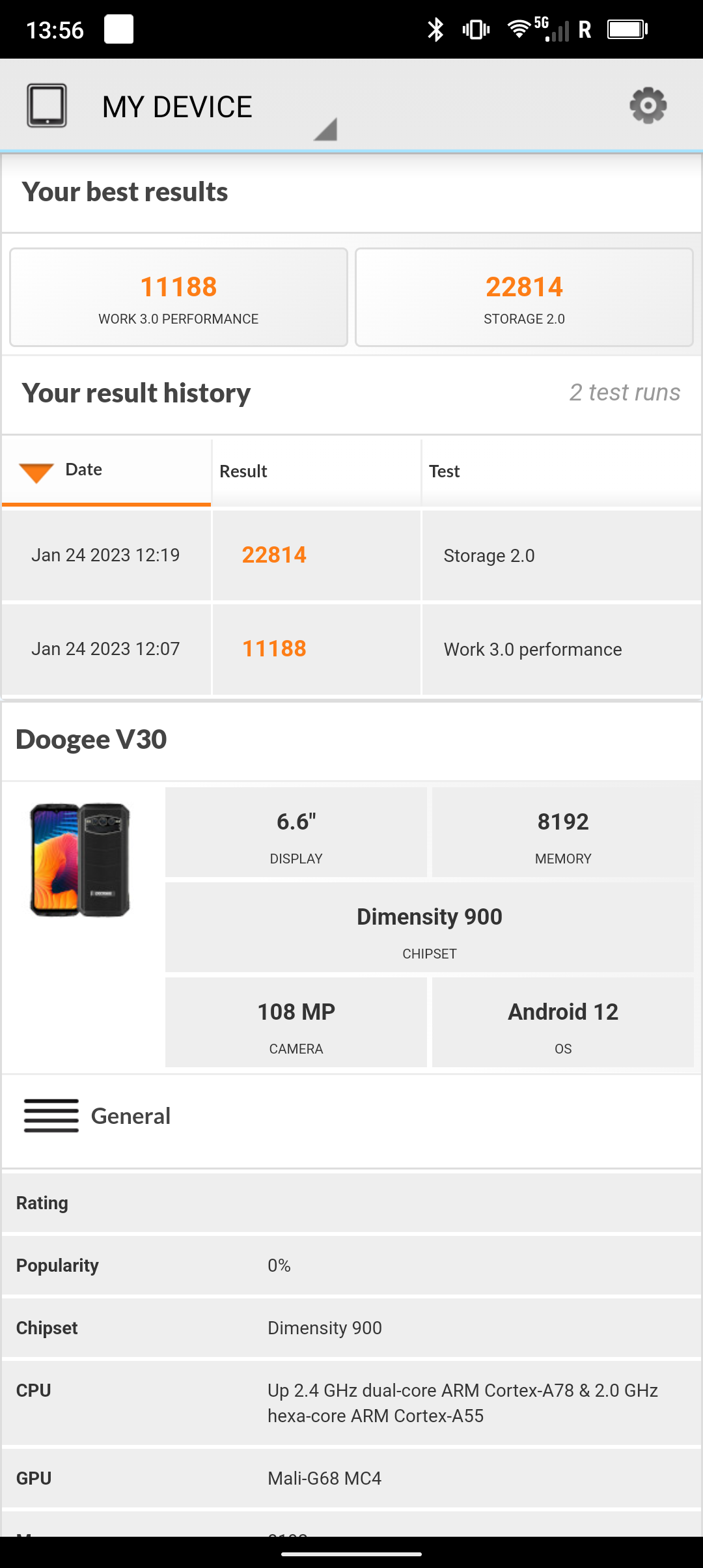
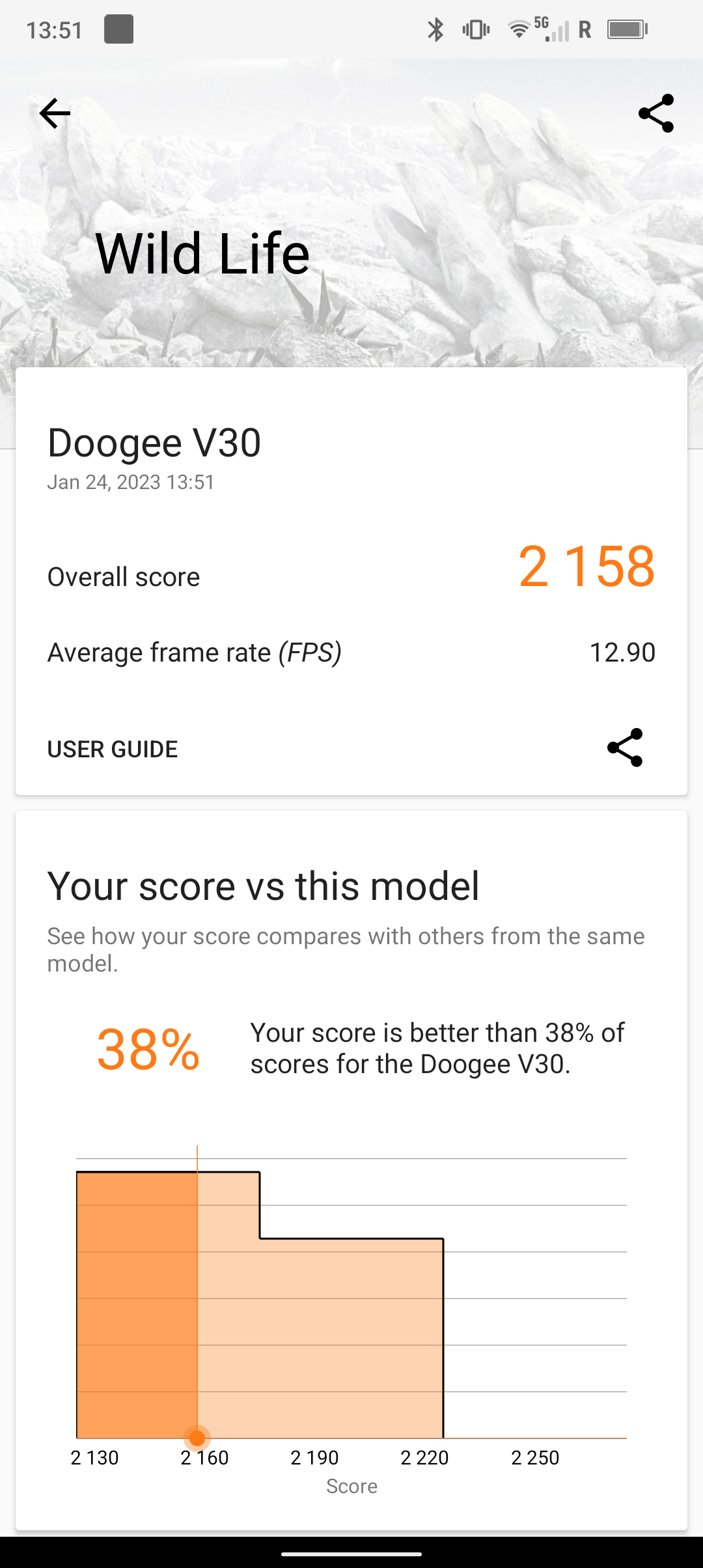
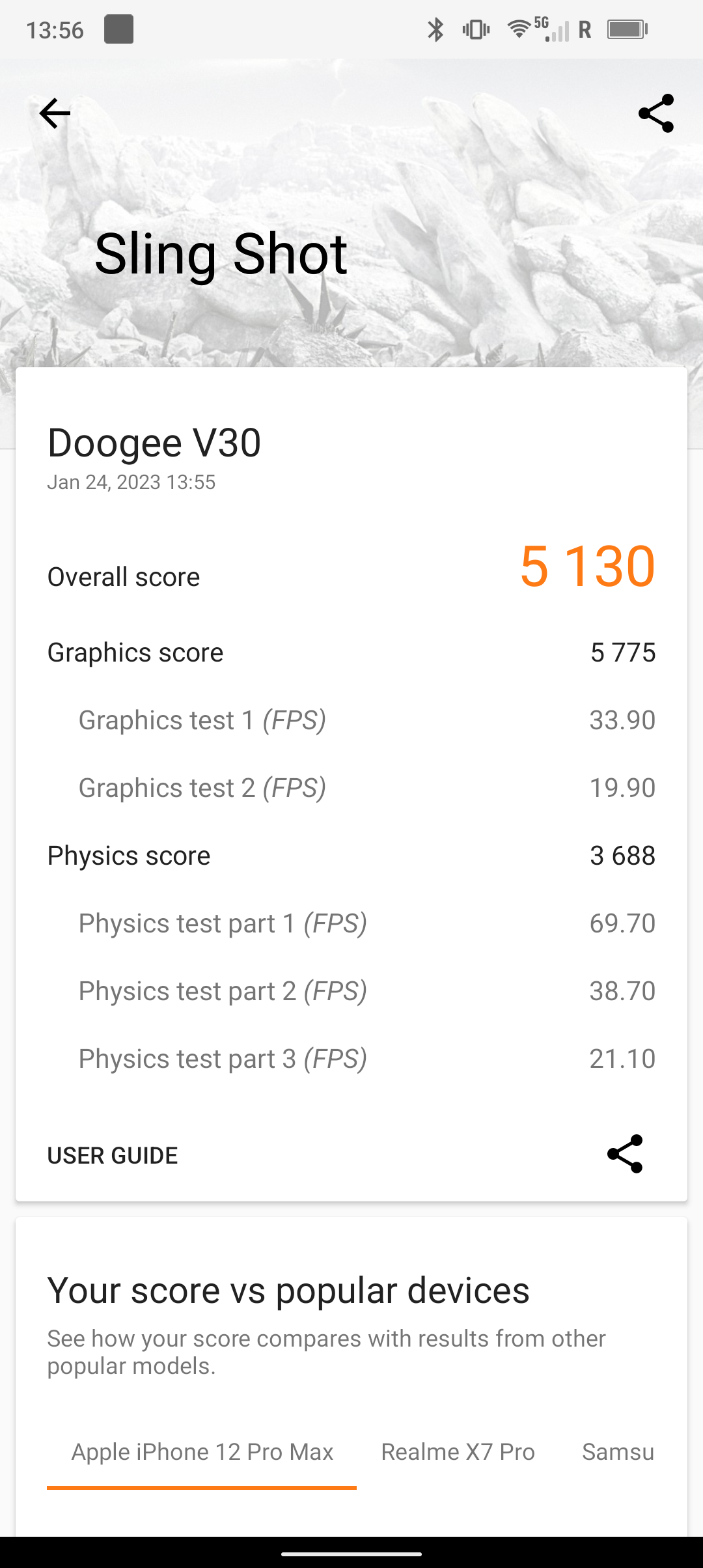
Benchmarking is abitrary, really, but it gives us a chance to compare a device to other devices that have run the same benchmarking. I used PCMark for Android to benchmark the V30, using the Work 3.0 and Storage 2.0 tests.
Work 3.0 results are very impressive, with the V30 scoring 11188 for performance. This is an excellent score, placing the Doogee V30 above even the Huawei MatePad 11 Pro we reviewed not long ago, and that's a tablet!
For the Storage 2.0 benchmarking, the Doogee V30 scored 22814, which is a pretty respectable score that one might expect from a smartphone in the upper mid-range market.
I also wanted to benchmark the V30 for graphics, so I fired up 3DMark for Android. I ran the Wild Life and Slingshot tests. The device scored 2158 for the Wild Life test and 5130 for the Sling Shot test.
The V30: Doogee's Best Performing Smartphone Yet
I've had the fortune to test several of Doogee's smartphones over the years, and I can confidently say that, of all the Doogee phones that I have crossed paths with, this one performs the best, without a doubt.
Obviously, it carries a fair few flagship specs, and these all work really nicely. Whether some of them have a place on a rugged smartphone designed to take a beating is another matter, but in terms of performance, the V30 does not let down. If you are after a rugged smartphone with some premium features, then the V30 is the model for you.
The eSim (which Doogee credited with 5GB of data for testing) worked a charm. I could actually receive a 5G signal in my house which, as I have alluded before, seems to be constructed entirely from lead and therefore receives nothing in the way of cellular data signal unless I put a trampoline on the roof and use it to get as high up as possible.
While eSim use is carrier dependent, it worked perfectly for me, with web pages loading up quickly and the ability to make calls and send texts all present and correct. You can also use up to four different eSim numbers, so if you plan to take your V30 traveling with you, then you could get an eSim for whatever country or countries you plan to visit, so you'll always have a connection no matter where you are (within reason, of course).
There is also an app called Doogee eSim on the phone, from which you can purchase credit for mobile data. This comes in 1 GB, 3 GB, and 5 GB bundles, with the cost increasing each time (for me, the costs were €2.39, €6.99, and €11.79, respectively, as I am in the UK). Each bundle is valid for 30 days.
The V30 can blitz through anything else you might need in terms of day-to-day work tasks. You can blitz through all the usual tasks with it, like sending emails, editing documents, uploading to and downloading from cloud services, and so on. I didn't notice the handset struggling with anything productive I threw at it.
The screen is great, too. For watching media, that 120 Hz refresh rate works a treat; as a result, you'll find that movies play with no noticeable flicker. Games work in the same way, and the V30 combines well with my Genshin Impact test, from graphics processing to displaying those vibrant colors.
I do feel that the phone doesn't need the front-firing stereo speakers. This is a rugged handset, not a fully-fledged entertainment-focussed smartphone. The minute holes in the speaker grilles just give dirt another place to accumulate. As always, you'll get better sound out of headphones, anyway.
Perhaps someone buying an iPhone or something similarly flimsy would welcome some front-facing speakers like that of the V30, but if you plan to take your smartphone up the side of a mountain with you, or onto a construction site, how bothered are you likely to be about this sort of feature? Not very, I'll wager.
The camera is decent, too. If you're out on site and need to update HQ with detailed images of your progress, then the V30 is more than capable. I found that the 108 MP camera produced reasonably good images in daylight, although these would only be for uploading photos to work servers, or rapid on-site social media posts, at best.
The night mode camera works well, although this is the same sensor that has appeared in several of Doogee's prior handsets. I'd have liked to have seen an upgrade to this camera lens. Either that, or it would be nice to see an (arguably more useful) thermal camera on here (but that usefulness depends on your needs). Doogee phones have had thermal sensors in the past.
My one gripe (which is the same gripe I would have with any phone carrying this feature): putting the fingerprint sensor in the power button. For me, it is just far too sensitive an area for it to be practical; the phone went berserk with vibrations of objection every time I picked it up and touched the power button with anything other than my thumbprint, even if I brushed it by accident.
I can understand, however, why Doogee would do this. If you need to take a photo with the V30 while your other arm is occupied, then placing the fingerprint reader in the power button makes sense, as you'll be less likely to drop it while you try to unlock it. However, it would be better if you needed to press the power button first to wake the fingerprint reader, in my opinion.
The phone certainly lives up to its rugged credentials. I carried out the same tests as I did in my review of the Doogie S98 and, unsurprisingly, it passed them all with flying colors. You've got to love a smartphone you can wash clean under the faucet if you get it all muddy, right?
A Rugged Recommendation
So, would I recommend the Doogee V30. Yes—above any other rugged smartphone available right now. The eSim is a winning innovation for me; it places the Doogee among the few we've seen in the rugged smartphone world and is usually a feature reserved for "big brand" smartphones like iPhone and Samsung Galaxy.
Couple this eSim compatibility with 5G and the apparent rugged aspects of the phone, as well as the little flourishes that make it more than just a rugged phone (whether you want front-facing stereo speakers or not), and you've got an excellent device on your hands. Rugged phone users, the Doogee V30 is a big step up, and certainly one you should consider if you're about to make your next purchase.

